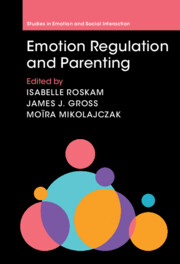Book contents
- Emotion Regulation and Parenting
- Studies in Emotion and Social Interaction
- Emotion Regulation and Parenting
- Copyright page
- Contents
- Figures
- Tables
- Contributors
- Preface
- Part I Conceptual Foundations
- Part II Influence of Parents’ Emotion Regulation on Parenting
- Part III Influence of Parenting on Child Emotion Regulation
- Part IV Current Trends
- Chapter 10 Culture and the Challenges of Being a Good Parent
- Chapter 11 Leveraging Parent–Youth Interactions to Measure and Analyze Emotion Regulation
- Chapter 12 Neurobiology of Parenting and Implications for Emotion Regulation
- Chapter 13 Emotional Labor in Parenting
- Chapter 14 Enhancing Parental Emotion Regulation Skills
- Conclusions and Perspectives
- Index
- Studies in Emotion and Social Interaction
- References
Chapter 12 - Neurobiology of Parenting and Implications for Emotion Regulation
from Part IV - Current Trends
Published online by Cambridge University Press: 05 January 2024
- Emotion Regulation and Parenting
- Studies in Emotion and Social Interaction
- Emotion Regulation and Parenting
- Copyright page
- Contents
- Figures
- Tables
- Contributors
- Preface
- Part I Conceptual Foundations
- Part II Influence of Parents’ Emotion Regulation on Parenting
- Part III Influence of Parenting on Child Emotion Regulation
- Part IV Current Trends
- Chapter 10 Culture and the Challenges of Being a Good Parent
- Chapter 11 Leveraging Parent–Youth Interactions to Measure and Analyze Emotion Regulation
- Chapter 12 Neurobiology of Parenting and Implications for Emotion Regulation
- Chapter 13 Emotional Labor in Parenting
- Chapter 14 Enhancing Parental Emotion Regulation Skills
- Conclusions and Perspectives
- Index
- Studies in Emotion and Social Interaction
- References
Summary
The transition to parenthood is a time of psychological and neurobiological reorganization thought to prepare parents for caregiving, including the unique demands of emotion regulation during infancy and early child development. This chapter reviews evidence that highlights changes in maternal brain structure, including data collected from preconception and across the postpartum period. Next, functional neuroimaging studies are described that have highlighted the importance of measuring reactivity to salient infant cues of emotion, specifically, infant facial expression and cries, to our understanding of the parental brain and emotion regulation. Finally, the emerging literature examining the neurobiology of parental emotion regulation is presented. Following this empirical review, limitations and future directions of the field are considered.
Keywords
- Type
- Chapter
- Information
- Emotion Regulation and Parenting , pp. 229 - 243Publisher: Cambridge University PressPrint publication year: 2023



